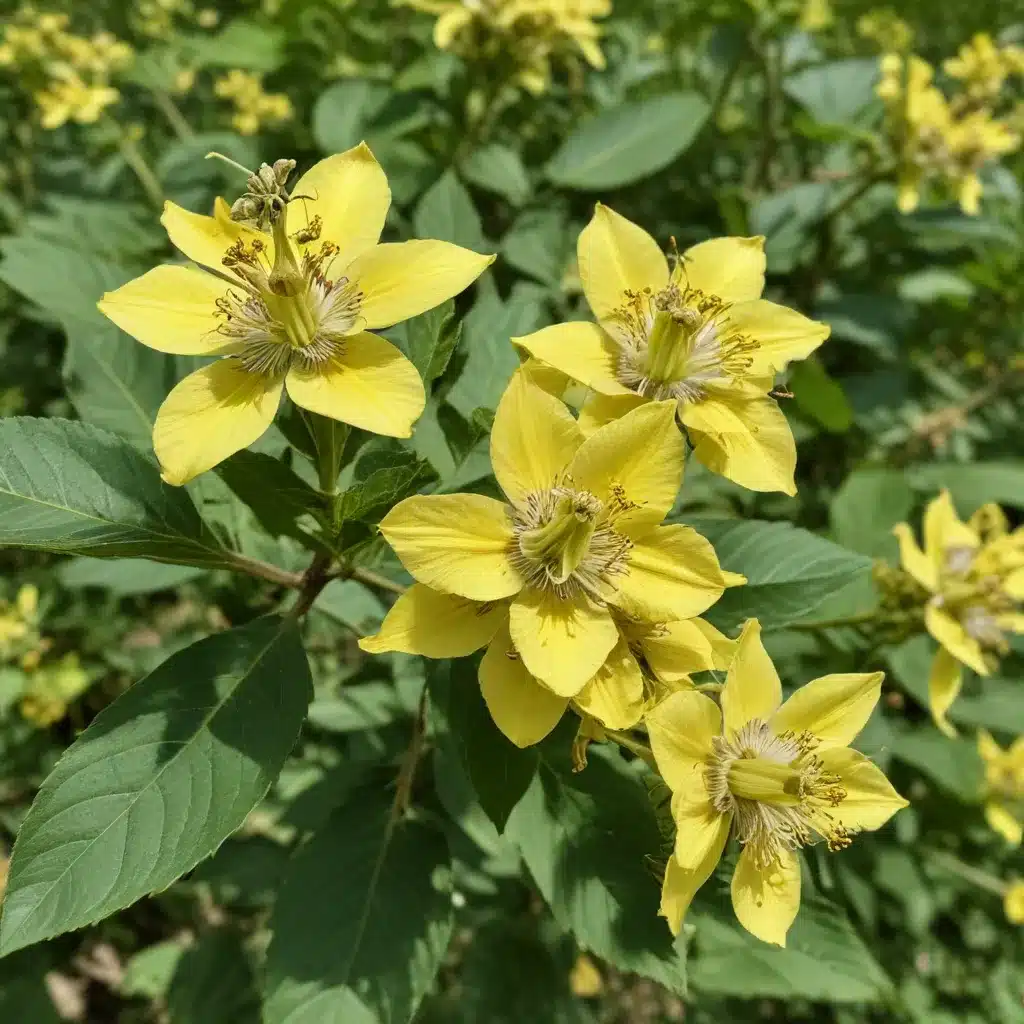
The Yellow Buckeye (Aesculus flava) is a remarkable native tree that captivates with its striking floral displays and versatile landscape applications. As a member of the Buckeye genus (Aesculus), this species exhibits a unique set of botanical features that set it apart from its counterparts. Through an in-depth exploration of the Yellow Buckeye’s identification, ecology, cultivation, and cultural significance, we’ll uncover the delightful nuances that make this tree a true gem within the arboreal realm.
Buckeye Tree Identification
The Yellow Buckeye is readily distinguished from other Buckeye species by its distinctive leaf structure. The tree’s leaves are palmately compound, meaning they are composed of several individual leaflets radiating from a central point, resembling an open hand. Typically, the Yellow Buckeye bears between 5-7 obovate leaflets, which are broader towards the tip and taper towards the base. The leaf margins are smooth, lacking the serrations or lobes found in some other Aesculus varieties.
The bark of the Yellow Buckeye is another key identifying feature. As the tree matures, the bark develops a scaly, plated texture, often with bull’s-eye grooves that lend it a unique visual appeal. The twigs are stout and light brown in color, with prominent terminal buds and shield-shaped leaf scars that provide additional clues for accurate identification.
The flowers of the Yellow Buckeye are a true showstopper, emerging in showy, upright panicles that can reach up to 8 inches in length. These blooms exhibit a vibrant yellow hue, in contrast to the creamy white flowers of the closely related Ohio Buckeye (Aesculus glabra). The fruit of the Yellow Buckeye is a smooth, leathery capsule that encloses two large, poisonous nuts, often referred to as “buckeyes” due to their resemblance to a deer’s eye.
Buckeye Tree Ecology
The native range of the Yellow Buckeye extends across the eastern and central United States, primarily in the rich, mesic woodlands of the Appalachian Mountains and surrounding regions. This species thrives in well-drained, fertile soils and can reach impressive heights of up to 85 feet, with trunk diameters exceeding 5 feet.
The Yellow Buckeye’s seasonal behavior is closely tied to its environment. In the spring, the tree’s large, palmate leaves unfurl, providing a lush, shade-producing canopy. The showy yellow flowers then emerge, attracting a variety of pollinators, including bees, butterflies, and hummingbirds. As summer transitions to autumn, the leaves of the Yellow Buckeye transform into a vibrant display of golden hues, before eventually dropping to the forest floor.
The Yellow Buckeye’s ecological significance extends beyond its ornamental appeal. The tree’s nuts and flowers provide food and shelter for wildlife, including squirrels, deer, and various bird species. Additionally, the Yellow Buckeye’s deep root system helps stabilize soil and prevent erosion, making it a valuable component of its native ecosystems.
Buckeye Tree Cultivation
Gardeners and landscape architects often incorporate the Yellow Buckeye into their designs, taking advantage of its impressive size, striking foliage, and eye-catching blooms. When planting a Yellow Buckeye, it’s essential to select a site with well-drained, nutrient-rich soil and ample space for the tree to reach its full potential.
The Yellow Buckeye thrives in partial to full sun exposure, though it can tolerate some shade. Proper pruning and maintenance are crucial to maintain the tree’s structural integrity and encourage healthy growth. Regular watering, especially during periods of drought, can also help the Yellow Buckeye establish and thrive.
In addition to the standard Yellow Buckeye, horticulturists have developed several cultivars that offer unique variations. The ‘Autumn Gold’ cultivar, for instance, boasts a more compact, rounded growth habit and exceptional fall color, while the ‘Brice’ cultivar is known for its resistance to leaf scorch and disease.
When incorporated into landscape designs, the Yellow Buckeye’s majestic stature and lush foliage make it an excellent choice for specimen plantings, shade trees, and naturalized areas. Its adaptability to a range of soil types and growing conditions also allows it to be utilized in urban settings and parks, where its ecological benefits and visual appeal can be enjoyed by all.
Buckeye Tree History and Lore
The Yellow Buckeye’s significance extends beyond its botanical merits, as it holds a rich cultural history and symbolic meaning in various regions and communities.
For Native American tribes, the Buckeye genus, including the Yellow Buckeye, played an important role in traditional medicine and folklore. The nuts were sometimes used for medicinal purposes, while the trees were also believed to have protective or lucky properties.
In the Midwestern United States, the Buckeye has become a beloved state symbol, with the Ohio Buckeye (Aesculus glabra) serving as the official state tree of Ohio. The Yellow Buckeye, though not as widely recognized, has also gained cultural significance in areas where it is native, often being celebrated for its aesthetic appeal and ecological contributions.
Beyond its practical and symbolic value, the Yellow Buckeye has also inspired folklore and legends that have been passed down through generations. The distinctive “buckeye” nuts, for example, are sometimes believed to bring good luck to those who carry them, a tradition that has endured in various communities.
By delving into the rich history and cultural associations of the Yellow Buckeye, we can better appreciate the multifaceted significance of this remarkable tree, which extends far beyond its botanical merits and into the realms of tradition, symbolism, and folklore.
Explore the remarkable Yellow Buckeye and discover its captivating characteristics at TriCounty Tree Care. Our team of arboricultural experts can provide tailored guidance on planting, caring for, and integrating this stunning native tree into your landscape. Let us help you cultivate a flourishing garden that celebrates the natural beauty and ecological value of the Yellow Buckeye.


